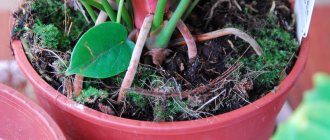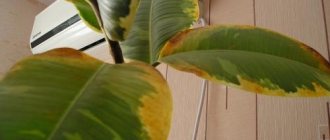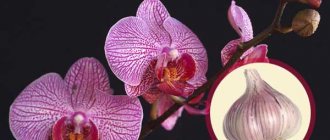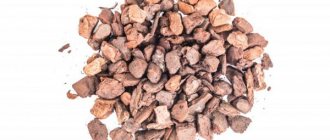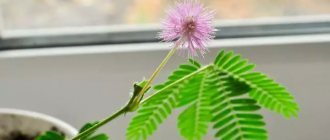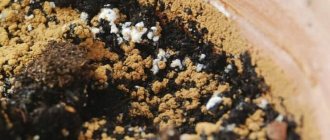The first and most important condition for indoor flowers to please the eye and decorate the interior is the selection of the right soil.
Ficuses are not too picky about the soil, but to get truly luxurious plants - with healthy shiny leaves and lush greenery, you need to know that they prefer fertile soil, with good water and air permeability, slightly acidic or with a neutral acidity level.
The roots of ficus trees are very sensitive to the presence of moisture in the soil; its excess has a particularly detrimental effect on them. Therefore, soil with a clay structure is definitely not suitable. There are types of ficus that in the wild grow on rocky ground (“bottle” ones), so it’s good to add small pebbles or brick chips to the soil mixture for them. The composition of the soil also depends on the age of the plants. For young people it should be looser. The required density of the soil mixture for adult ficus is achieved by adding turf soil or humus.
Features of growing and caring for ficus
Ficus is a native of the tropics. The plant needs warmth, good lighting, high humidity and fresh air.
Recommended conditions for its cultivation and care measures are collected in the table:
| Lighting | Good, diffused, needs lighting in winter |
| Location | Western, eastern window sill. Doesn't tolerate change of location well |
| Air temperature | In summer +25…+30°С, in winter +16…+20°С |
| Air humidity | 50–70% |
| Ventilation | Regular access to fresh air and protection from drafts is required |
| Watering | Moderate in summer (2–3 times a week), scanty in winter (1 time a week), warm, settled, filtered rainwater, as the top soil layer dries |
| Spraying | In summer, regular use of warm, settled or boiled water |
| Top dressing | In spring and summer, 2 times a month with nitrogen-containing fertilizers (nettle, mullein, wood ash infusion, “Ideal”, “Gumisol”, “Ficus”, “Palma” fertilizers); not required in autumn-winter |
| Transfer | If necessary, by transshipment method, annually - renewal of the top soil layer |
| Trimming | Sanitary and formative, from the beginning of spring to the first ten days of summer |
Methods for propagating rubber plants
In the natural environment, rubber-bearing ficuses reproduce by seeds, as well as by aerial and adventitious roots. Often a seed germinates, anchored in the folds of the bark of a tree of another species. That is, it behaves like an epiphatic plant.
At home, Elastica is propagated in three ways:
- cuttings;
- bends;
- leaves.
Cuttings
A cutting 15-17 cm long is cut from a healthy tree. It is important that the stem has internodes and 1-3 small leaves. Wash the cut and place the cutting in a jar of water.
An activated carbon tablet is added there and the cutting is covered with a plastic bag. The jar should not be placed in the sun.
After 2-3 weeks, roots appear and the ficus is placed in the soil. The cuttings can also be rooted in crushed vermiculite or sphagnum moss.
Air outlets
Select the apical shoot. Stepping back 2 cm from the internode, make a notch, cutting off the bark and tissue. The wound is powdered with a root formation stimulator.
Sphagnum moss is soaked in water, applied to the cut and secured with plastic wrap. For greater strength, the protective material is tied with two cords, below and above the wound. The packaging should allow for watering.
Important! Moss must always be kept moist. After a month, the branch is cut below the polyethylene and the film is removed. Strong and healthy roots appear in sphagnum. Then the ficus is planted in a pot.
Leaves
A short stalk with a leaf is cut from the stem. Place it in water for half an hour to allow the milky juice to drain. Then plant it in a pot to a depth of 3 cm (to the base of the leaf petiole).
To create optimal conditions, put a plastic bag on the seedling. With the help of which the temperature in the greenhouse is maintained at 25–28°C. After 2–3 weeks, the first roots appear.
Soil requirements
The soil in which it is planted has a great influence on the decorative appearance, growth and development of the ficus.
The following requirements are put forward for the soil for this flower:
- nutritional value;
- good conductivity of moisture and oxygen;
- humidity;
- slightly acidic or neutral pH reaction;
- high drainage layer.
Did you know? Residents of the tropics build bridges from the aerial roots of ficus trees. Such “live” crossings are strong and durable.
Choosing the right time
From late October to early spring, ficus trees are in a state of relative dormancy. Even under normal temperature conditions, plants react to shortening daylight hours and their vegetation slows down noticeably. At this time, transplantation is most traumatic. A long recovery may follow, the bushes begin to hurt.
Read! What is plant vegetation?
Early spring is the best time to carry out the procedure. Ficuses transplanted before the active growth phase easily adapt and quickly master the fresh substrate. This gives them an impetus to develop and grow young greenery.
If urgently necessary, you can replant the flower in the fall. In this case, you should be in time before a significant reduction in sunny days, which will give the plant the necessary time to recover before the calm winter phase.
Several techniques that can help a flower easily endure a traumatic procedure in the fall:
- ficus roots are sensitive to temperature: the soil, drainage, pot and water for irrigation should not be cold;
- It is useful to remove sluggish, dry, elongated and immature shoots, which will reduce the load on the root system;
- Any draft is harmful to a plant in a new pot. If you have to keep it on the windowsill, it is better to use a special heating pad for it.
When planting, you can place several tea bags, pre-brewed in boiling water, on the drainage layer. This technique not only additionally nourishes the roots in winter, but also prevents soil from being washed away.
Required soil composition
In order for a flower to be healthy, have large, richly colored leaves, and a lush crown, it must be grown in soil consisting of certain components. The composition of the soil should differ depending on the age of the plant. For young specimens it should be looser, for adults it should be denser.
Young plants need to be planted in a substrate that consists of:
- turf land;
- humus;
- sand;
- peat
Turf is obtained from areas where perennial grasses grow. When humus is added to it, nutritious soil is obtained. Sand and peat are needed as loosening agents to improve water and air permeability of the soil. Expanded clay, coarse sand, and charcoal are also used as disintegrants. These components prevent moisture stagnation and root rotting.
Mature ficus plants will require soil consisting of:
- leaf soil;
- humus;
- sand.
Important! Soil with a clay structure is not suitable for growing ficus plants. It provokes stagnation of moisture, which is detrimental to the plant.
The acidity level of the soil should be within the range of 6.5–7 pH. Acidity is reduced by adding dolomite flour and lime to the soil. Increased by mixing peat.
Crown formation
Pruning to form the crown is carried out in the middle or end of February. To work, you need pruning shears or a sharp knife, as well as alcohol to disinfect the tool.
Crown formation includes trimming the tops and side shoots. The stems are shortened by 5–20 cm, removing leaves and several internodes. A fungicide is applied to the cuts to prevent fungal diseases and the wounds are sprinkled with pounded activated carbon.
Attention! A few days before the crown is formed, fertilizers are applied to the ground.
Selection of ready-made soil
For planting ficuses, a substrate is usually chosen, the packaging of which bears the inscription “Ficus” or “Palm”.
Almost every soil manufacturer produces such a product. Their compositions are different. As a rule, they contain vermicompost, peat, sand, expanded clay, lime, dolomite flour, other inert fillers that improve the composition of the substrate, and mineral additives.
This soil does not require pre-treatment and is already ready for use.
Famous: “Flower Happiness”, “Seliger-agro”, “Vermion”, “Garden of Miracles”.
Ficus Benjamin varieties with photos
There are not very many species, and in appearance they do not differ much from each other. Lovers will be able to choose a flower that suits their taste more than others.
Important: the more light spots on the leaves, the more demanding the ficus is in terms of lighting.
Exotic
It is compact, has dark green leaves with wavy edges. This is the most unpretentious species, which is better than others for beginning gardeners.
Daniel
It has large, dark green leaves, similar in appearance to the exotic variety.
Monique
The light green leaves have creamy golden spots along the edges. More demanding of care than the previous two types.
Reginald
Outwardly it resembles the Monique variety: light leaves with a smooth edge and light spots.
Kinky
Dwarf ficus with shiny small leaves with a light edge (in an adult plant it takes on a pinkish tint). It responds well to pruning, allowing you to create fancy shapes.
Baft
It has a wide light border along the edge of a dark green leaf, which looks unusual and attractive.
Twilight
It is distinguished by almost completely white leaves. The most demanding of lighting: light leaves lack chlorophyll, and the plant will wither in the shade.
Baroque
The leaves are small and have an unusual, twisted shape. Suitable for those gardeners who like to stand out with original plants.
How to make soil for ficus with your own hands?
Many gardeners prefer to make the substrate for planting their flowers with their own hands. In this way, it is possible to control its composition and saturate it with exactly those substances that are necessary for a particular species at a certain stage of development. The disadvantage of preparing the soil mixture yourself is the laboriousness of the process. Some ingredients are not always and not available for sale everywhere.
Important! Soil prepared with your own hands is subject to mandatory disinfection. It needs to be poured with a solution of potassium permanganate or calcined in the oven (microwave) at a temperature of +90...+100°C.
The composition of the soil will differ depending on the type and age of the ficus. Here are recipes for popular indoor species.
For rubber and microcarp:
- Combine equal parts of leaf soil and turf.
- Add half of the river sand.
- Use broken bricks and small pebbles as drainage.
- Cover with a layer of sand on top.
For Benjamin:
- Mix leaf soil, humus, and peat in equal proportions.
- Add river sand and small pebbles.
- Mix everything well.
- Place drainage from a layer of expanded clay and a layer of sand at the bottom of the pot.
Where to put
On the east, south-east, west or south-west window or away from the window if it is on the south side.
In summer, you can take the ficus outside, onto a balcony or onto a veranda, but if night temperatures drop below +16º, it is better not to do this, otherwise the plant may catch a cold.
Ficus with monochromatic leaves tolerates partial shade well, but a plant with spotted and white leaves must be placed in the light: they do not produce chlorophyll well. Keep the flower away from drafts and radiators.
Signs of incorrectly selected land
With improper care or an unsuitable microclimate, the plant will experience changes in appearance.
If the soil is not suitable for him, then this can be recognized by the following signs:
- change in leaf color;
- falling leaves;
- infection by fungus gnats.
If such problems arise, the flower must be transplanted into new soil made up of the right ingredients.
Fungus gnats are destroyed by insecticides: “Decis”, “Aktellik”, “Agravertin”, “Aktara”, “Intavir”. Did you know? The oldest ficus grows in Buenos Aires. It was planted in 1781. It was given the name Homer's Tree.
If you are one of those who likes to keep indoor plants and decide to plant a ficus, you need to provide it with the kind of soil that nature intended for it. Ficus will not require much attention. Even those who grow a flower for the first time can handle its planting and care.
Illumination
Loves moderately bright diffused lighting. Grows well on windows facing east or west.
Install shading on southern window sills - hang curtains, blinds or cover the window with film, which can be bought at a hardware store - otherwise, due to direct sunlight, burns in the form of light spots may appear on the ficus.
When placing the ficus on a north window, provide it with additional lighting in the form of a phytolamp, otherwise its branches will become thinner and it will grow poorly.
Varieties with dark leaves tolerate partial shade well, while variegated varieties need bright light due to the low amount of chlorophyll.
When do you need fertilizing and how to do it correctly?
Ficus needs soil rich in vitamins and nutrients, so “saturating” the soil is an important part of caring for this indoor plant. Feeding the flower should begin in April, when the ficus is just waking up after winter, and stop in September.
You can buy ready-made fertilizers for rubber ficus, but for its full growth you need to alternate mineral and organic (nitrogen-containing) stimulants. To avoid burning the roots, the soil must be watered before fertilizing, and only then fertilized.
Flower design
Ficus rubber is an ideal plant for interiors, rooms and is very often used in office landscaping. The variety of varieties and colors of ficus leaves allows you to create wonderful combinations and many options, both in a single planting and in a composition. Use ficus elastica tineke. Ficus rubber-bearing Tineke will go well with others such as Ficus Belize and Ficus Robusta. Pay special attention to ficus tineke. After all, ficus tineke is very decorative. You can use only ficus tineke in a composition of several, but of different heights.
Ficus can be bought almost all year round.
A composition of two rubber-bearing ficuses of the same size, placed on both sides of the front door, also looks beautiful. You can make a composition from one type of ficus, but of different varieties. If the plants are tall, then the base of the composition can be decorated with an ampelous type of ficus or you can use plants that are similar in care. Good luck to you.
Brief botanical information
This plant, which has become a house tree, came to us from South Asia, the Philippines, and Australia. The height of Ficus Benjamin in natural conditions exceeds 8 meters, but indoors it is unlikely to exceed 2 meters.
The gray-brown trunk sends out branches that slightly bend downwards. The leaves are attached with small petioles (up to 2.5 cm). The leaf itself is oval in shape with a pointed oblong end. The length of the leaf blade is from 4 to 8 cm, width - up to 4 cm. Dense glossy foliage creates a very decorative effect. The color of the leaves depends on the variety. There are dark green colors, many varieties of variegated foliage, and varieties with a light green color.
Mineral fertilizers
Fertilization is a mandatory procedure that must be applied to all indoor flowers. Any soil, even if it is very rich in nutrients, is depleted over time. As for ficuses, mineral fertilizers are very important for them. In order for a culture to grow quickly and actively develop, it needs three important components: nitrogen, phosphorus and potassium. They are responsible for the optimal formation of greenery. Mineral fertilizers that are needed to replenish nitrogen in the soil are:
- dry. Available in granules, powder or tablets. It is customary to add them directly to the soil with a slight depth. When watering the plant, dry fertilizers will dissolve and penetrate into the deeper layers of the substrate;
- in the form of prolonged sticks. This type of fertilizer is intended for laying under the rhizome. Most often, these sticks are simply stuck into the ground. When watered with water, they dissolve (quite slowly), saturating the substrate with nutrients;
- liquid. Available in solution form. Liquid mineral fertilizers are necessary for application to the roots. They can be dissolved directly in water or added to a spray bottle to spray the plant.
The meaning of vermicompost
Vermicompost is made by earthworms. The ficus needs this element to develop and increase growth. Vermicompost is a component in the mixture. Its action:
- growth stimulation;
- accelerating their adaptation when replanting plants;
- improving flower survival.
To reduce acidity to the desired degree, use lime or dolomite flour. The elements provide the soil with calcium and magnesium. To increase the nutritional value of the soil, tree ash is used. She is the supplier of potassium and phosphorus for the flower. If it grew in nature on rocky soil. And these are “bottle” specimens growing in dry areas. Pebbles and shards are added to them.
READ MORE: Beautiful wrought iron fences and gates with a wicket: photos and sketches of options



